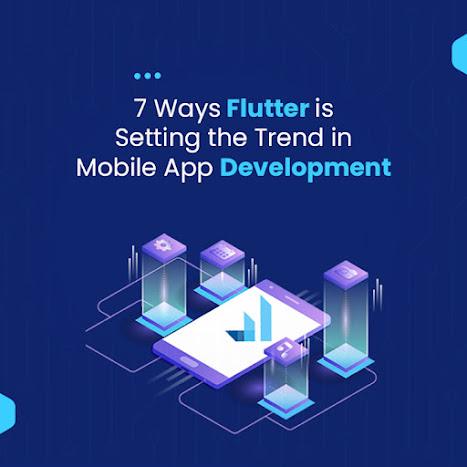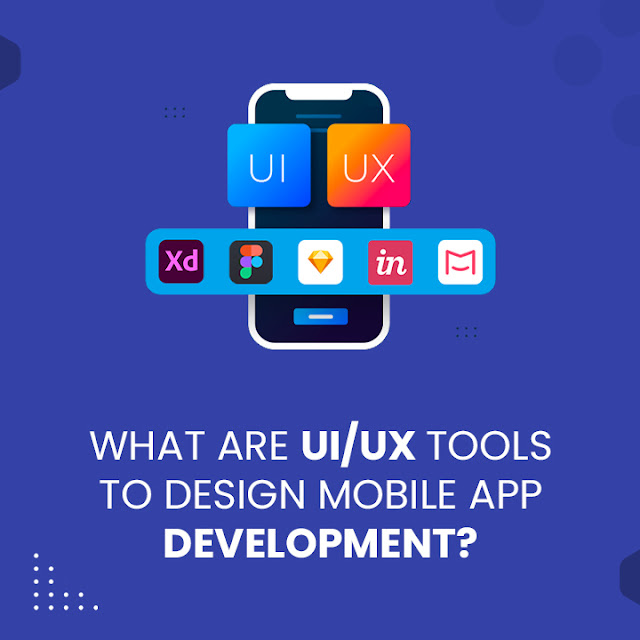Mobile App Development Basics: How to Begin With iOS Development?
Are you keen to learn some basics of mobile app development? I'll provide you with the steps to follow, including a list of resources and tools that allow you to get the most basic understanding of iOS app development. In sharing my personal experiences, I'll outline what you need to concentrate on to ensure that your iOS begin as smoothly as you can. Begin with the basics of programming. This is particularly important for those who did not study engineering or computer science in college and high school! This article will look at the fundamentals of developing mobile apps.
Learn more about iOS's iOS world:
After learning the fundamentals of
programming, you're ready to dive deep into the iOS world. I'm assuming that
you'll have a good understanding of the iOS platform and maybe use Apple
devices; however, if this isn't the case, then you must progress in that
direction.
Do I have to purchase a Mac?
Remember that starting with iOS
development is quite expensive. This is because iOS apps can be created
exclusively in the macOS environment, and we know that Apple machines are
costly. This is probably why it is more Android than iOS developers on the
market.
If you don't own a MacBook or iMac and
you aren't willing to invest a large sum in the equipment, some alternatives
are less expensive:
* Buying a used older MacBook (that's
my plan when I first started)
* Consider purchasing a Mac miniature
(remember that you'll require a keyboard, monitor, and a mouse to operate it)
* Set up the Virtual macOS
application for Windows (I did not test this by myself; however, AFAIK, it's
pretty slow and insecure -but it could be a temporary solution until you
purchase the Mac)
* Try Swift on Windows
Do I require an iOS phone?
Technically, not. If you prefer not
to run your application directly on your device, it is possible to use the iOS
simulator, which is included inside Xcode.
However, to become acquainted with
the iOS environment, I would highly recommend purchasing an iPhone. It is even
better to make it your mobile daily, familiar with its functions, and
experience its Apple UI and UX. To create great apps, you need to be an iOS
fan.
What tools do I require?
The essential development tool to get started is
Xcode. The Xcode IDE is Apple's tool for developing applications designed for
Mac, iPhone, iPad, Apple Watch, and Apple TV. It's free and is available
through the App Store. Download the most recent version (do not install beta
versions).
Xcode is a very efficient and
complicated tool. Being familiar with its features can help you create apps
faster. Explore the options for debugging:
- Breakpoints
- Investigating your view's hierarchy of views
- Printing variables within the debugger
This is a crucial starting, as you'll
mainly be testing your code. Be aware of the differences between schemes and
targets folder references and groups the build number, build versions
.xcodeproj, or .xcworkspace. Examine the most crucial building settings and
phases.
Other tools I employ include:
* ITerm is an excellent replacement
for Terminal on the Mac
* Source Tree -- - GitGit GUI I would
suggest it to all those who are just beginning to learn about the GitGit
The Proxyman tool is a beneficial
tool to help debug HTTPS requests.
Sublime is an all-purpose text editor
IOS development concepts:
Once you've got an excellent
foundation in programming and are comfortable with Swift, the second step would
be to master different concepts you'll need to know to create modern and
reliable iOS applications. I'll try to provide the various layers in the app.
You can use that as a guideline or checklist when exploring and learning.
App Architecture:
You will likely begin studying iOS by
using MVC. MVC architecture. It is recommended to master at least another
architecture --- MVVM, and MVVM-C. VIPER, Clean Swift...
Lifecycles:
Examine the lifecycle of an
application. What is the difference between AppDelegate as well as Scene
Delegate? Examine the lifecycle of the View Controller. What do we need to add
to viewDidLoad? And what should we add to viewWillAppear?
Dependency manager:
How do you manage the dependencies of
your application? Do you know how to set up third-party libraries? Consider
exploring CocoaPods or Swift Package Manager.
Networking:
How do you create an easy HTTP
request? Learn about your REST API. What is the best way to write the entire
network layer of the application? Explore one of the latest networking
libraries, such as Alamofire. Additionally, many applications have the option of
login. Learn about, e.g., OAuth and how to handle tokens.
Persistence of data:
How do we store data within iOS
applications (like the user's email address, password, and information from the
server-side)? ...)? Consider NSUserDefaults, iOS keychain, databases, and file
management (e.g., Realm). The subject is highly complicated and crucial, so be
sure to research every option and the best time to use each one.
Patterns of communication:
There are a variety of ways we can
create communication between two objects within iOS. In Bornfight, the most
popular method is RxSwift or Combine. Reactive programming is highly effective
and is extensively employed for iOS development, but it may be somewhat
overkilling for novice developers. If you're unfamiliar with reactive
programming, you can start by using the classic design pattern delegate,
complete handlers, and notifications.
User interface:
There's always a lot of discussion on
the most effective method to create UI for iOS.
Here are a few options that you could
consider:
* Storyboards
* Hibs
* Programmatically
* Swift
* Combination of two
Make sure that your interface should
be responsive and able to be adopted across every iOS device. The auto-layout
can be your friend.
If you're using storyboards, do not
place all your screens onto one storyboard because it will get chaotic. Make
sure you use one storyboard per screen.
Keep in mind that just getting
acquainted with SwiftUI will probably not be soon enough because many legacy
apps do not use SwiftUI.
Navigation and Hierarchy:
View structure and navigation between
screens can be confusing at first. Know the difference between pushing and
showing the view controller. You must be familiar with container view
controllers. Moving between screens using the pattern of the coordinator is
easy.
Multithreading:
Multithreading is what it sounds
like? What are the reasons and when do we need it? What is the best way to
change between the primary and background threads? What's the deal with the UI
or multithreading?
Create a simple application:
A thorough understanding of the above
subjects will prepare you to write the simple iOS application. Make sure to
apply every concept you've learned through the course!
Select one of the publicly available
APIs to build an easy application with the tab bar, navigation bar, list of
items, search and filtering, and display for each item. It is also possible to
include a home screen with an Apple sign-in and a settings page with an option
to sign out. If you don't have a layout, you can use the layout from the
Appstore app and apply iOS SF symbols. IOS SF symbol.
Remember, the aim isn't just to build
the application that works and is a clean and tidy code.
Think of your app the same way as a
massive drawer in your home. If we put everything into the drawer and shut the
door, your home will appear clean, and guests won't be able to spot any
suspicious items. This sounds wonderful; however, what happens in the next few
weeks? If the drawers in your home aren't well-organized and organized, it
isn't easy to locate what you require. And adding more things could cause
everything to fall over onto your head, and you'll accumulate a lot of rubbish.
This is also true for software development. Writing clear code can make apps
more maintainable (adding more features or altering existing ones, fixing
bugs).
It is a good idea to know:
Alongside the items specifically
connected to iOS it is also several other areas I'd suggest you investigate:
Version control via GitGit is an
accepted practice today. Get familiar with pulling pushes, committing, and
storage. Code review and pull requests are also popular in the business world!
* Design tools like Zeplin, Figma,
and InVision.
• Task-management tools such as JIRA,
Trello, and Confluence...
Where do I follow next?
As I stated at the beginning of this
article, the entire thing is a reference to help you start working with iOS
development. If you're entirely unfamiliar with mobile programming, then there
are more advanced topics to explore and learn more about later? The reason I
chose to leave them out of the start-up pack.
Some ideas from the top of the head
could include writing test animations, concurrency, concurrency Push
notifications, CI/CD iPadOS, and the most popular frameworks (Firebase,
Crashlytics, SwiftLint ...), creating profiles, as well as certificates... Do
not ignore estimations, planning, and other soft skills vital to a successful
iOS developer. Sign up for the most popular iOS newsletters, read several
interesting iOS blogs, and don't skip the only WWDC.
Conclusion:
And lastly, be aware of this: being a
great developer requires constant learning. I wish you the best experience with
iOS development. Please feel at ease applying to any of our available iOS jobs.
Contact SoftCircles, LLC, a Mobile App Development Company in New York.




Comments
Post a Comment